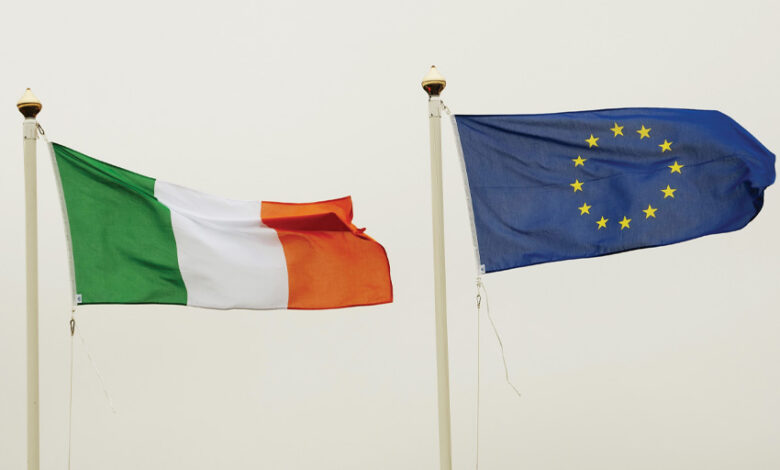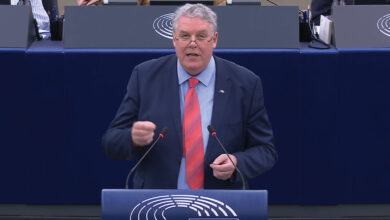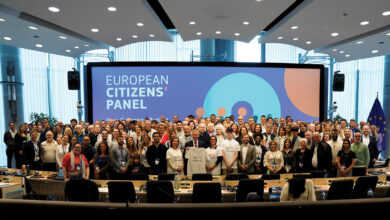50 years of economic and social change

Ireland’s dynamic economic transformation can be tracked over its 50 years of EU membership, including the economic shift away from agricultural dependence, Ireland’s proportion of EU GDP, and its once-unimaginable trade surplus.
Ireland’s EU membership has a broad approval rating, with opinion polling consistently showing support for membership as above 80 per cent. However, the bumpy road presented by events such as the Nice Treaty and the Lisbon Treaty (both of which were initially rejected in the State via referendum), as well as the EU-IMF bailout which once effectively removed the State’s economic independence, have seen support for the EU fluctuate at times.
50 years on from the year that Ireland signed up to the European Communities, the scale of change that has taken place is undeniable. Whereas Ireland was once globally known for high levels of emigration, in 2023 Ireland now has net immigration of over 77,000 per annum, with that figure expected to continue increasing throughout the 2020s.
Furthermore, whilst Irish agriculture retains key influence among decision-makers, the transformation of the economy from agricultural to service-driven can be exemplified by the number of people employed in agriculture. 24 per cent of Irish people worked in agriculture in 1973, a figure that stands at just 4 per cent as of 2022.
Whilst this influence has waned, the economy has grown. In 1973 – when the European Communities was composed of just nine members – Ireland’s proportion of the Communities’ GDP stood at 0.6 per cent. However, in 2023, Ireland makes up 3.2 per cent of the EU’s GDP, in spite of its population only comprising 1 per cent of an EU now comprising 27 member states.
Additional change can be observed in how the State’s trade networks have evolved, with Ireland once dependent on imports and reporting a trade deficit of IR£268 million (€340 million) in 1973. In 2023, this trend has reversed with the State now reporting a trade surplus to the tune of €67.6 billion.
However, this has also partially resulted in an Ireland which is less affordable for its citizens to live in. In 1973, the average weekly wage stood at IR£30.12 (€38.25) whilst the average weekly wage now stands at €825 per week. However, the CSO demonstrates that the average house price in the State stands at €318,000, whereas it stood at IR£7,095 in 1973.
Taking these two figures into account, the average house in Ireland now costs 7.41 times the value of the average annual earnings in the State, whereas in 1973, the average price of a house was 4.53 times the average annual salary.
Ireland’s EU membership has undoubtedly led to an influx of money into the State and, with Britain’s recent departure from the EU, Ireland holds the potential to become the main western entry point into Europe. However, in that time the disconnect between the economy and those who it serves has become more prominent, which must be factored in by Ireland’s decision-makers.





